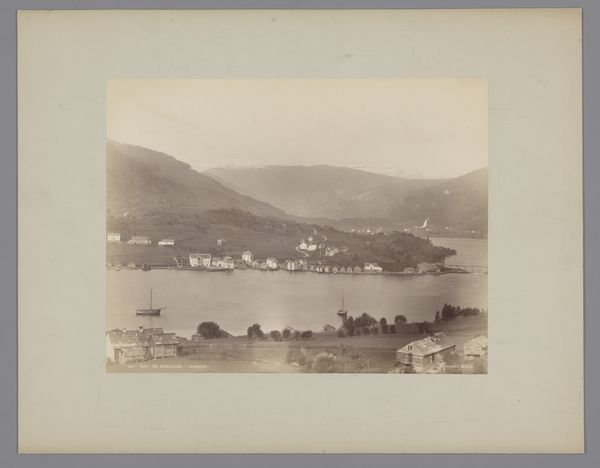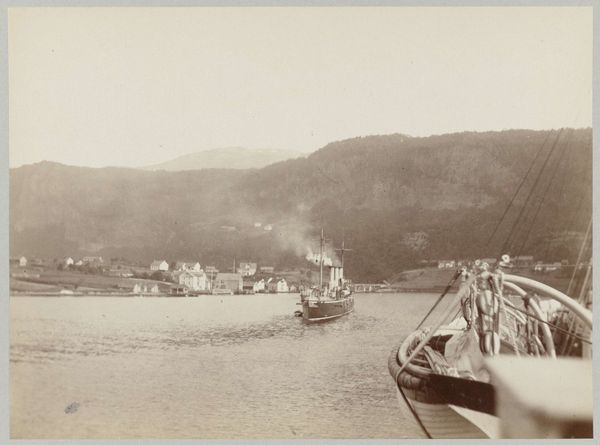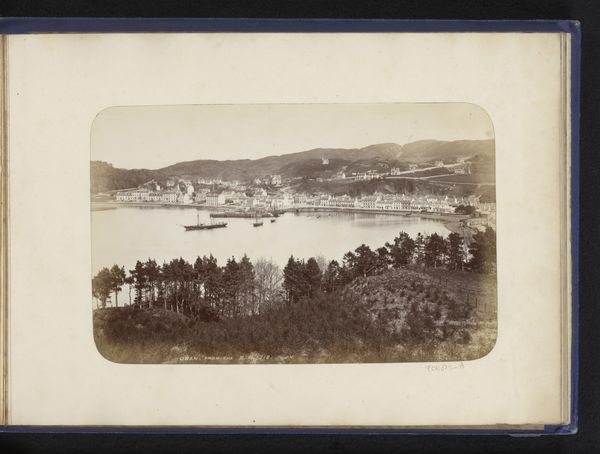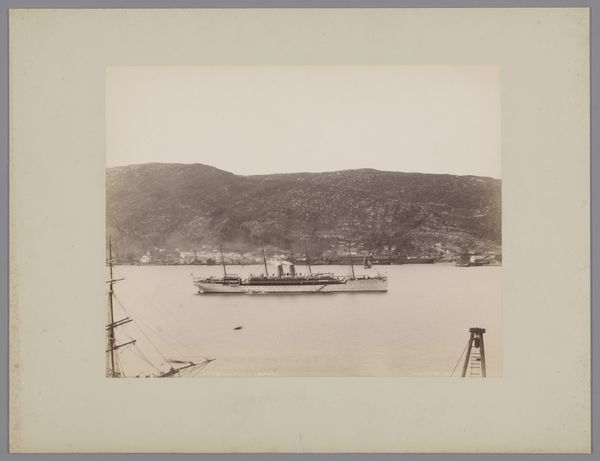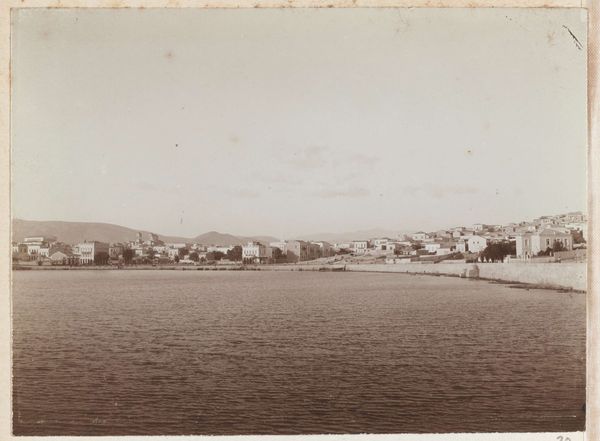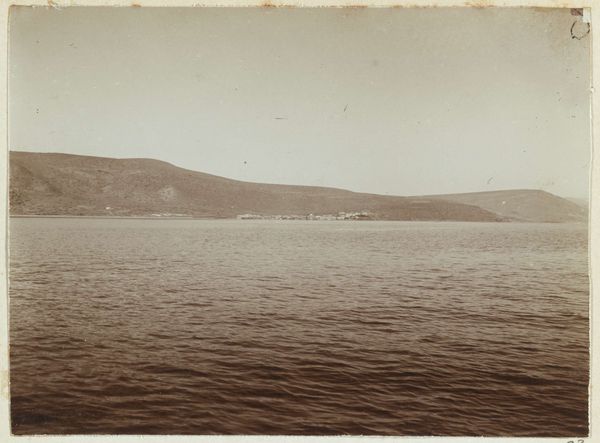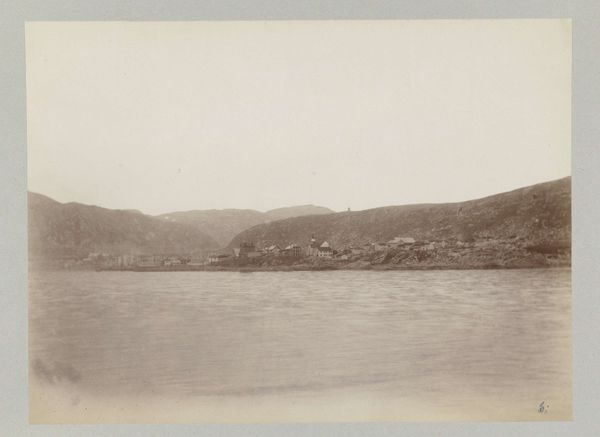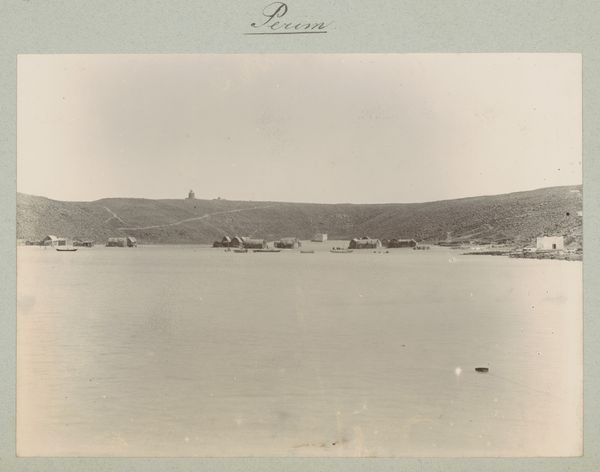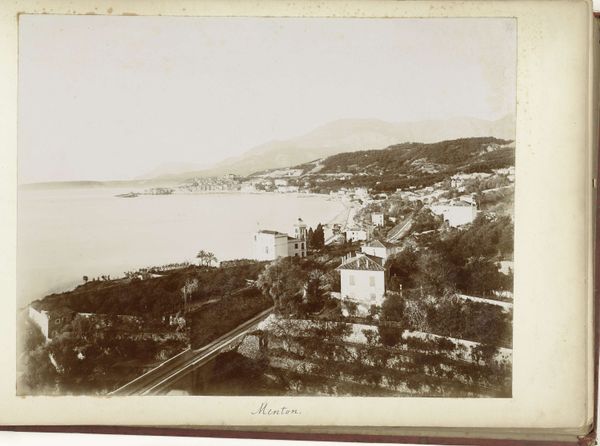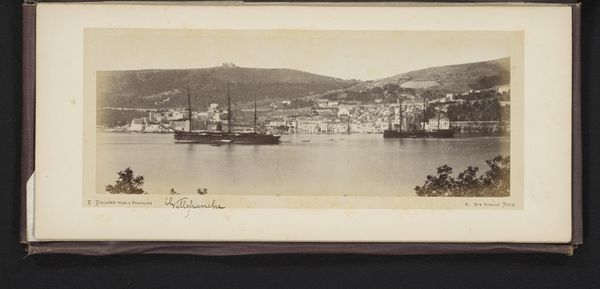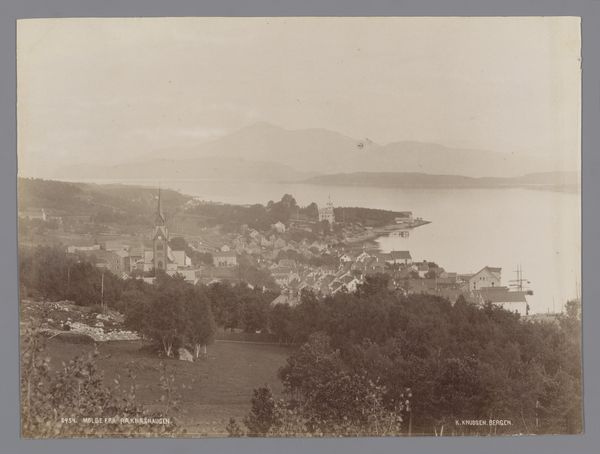
photography
#
pictorialism
#
landscape
#
photography
Dimensions: height 168 mm, width 231 mm, height 200 mm, width 269 mm
Copyright: Rijks Museum: Open Domain
Editor: This photograph, "Bergen gezien vanaf het water" by Henry Pauw van Wieldrecht, was taken sometime between 1896 and 1898. I'm immediately struck by its stillness – the muted tones and the calm water create a sense of quietude. It almost feels like looking at a memory. What social or historical factors shaped its creation? Curator: It’s a great observation. Pictorialism, which this photograph exemplifies, emerged as a counter-movement to the increasingly mechanical and documentary uses of photography. Artists like van Wieldrecht deliberately sought to elevate photography to the level of fine art, emphasizing aesthetic beauty and emotional impact over pure representation. Think about the burgeoning art market at the turn of the century, and the pressures to define artistic value. Where do you think photography fit within those pressures? Editor: I suppose it was vying for legitimacy alongside painting and sculpture? Curator: Precisely! Pictorialists employed soft focus, manipulated printing processes, and even hand-applied brushstrokes to mimic the effects of painting and printmaking. Consider how these techniques served to separate photographic works from their purely documentary applications. The elite artistic groups helped secure market share and public visibility. Editor: So it's a political statement as much as an artistic one? Curator: Absolutely. The act of creating such images becomes a claim for photography's rightful place in the art world, challenging existing hierarchies and power structures. It prompts us to question what art *should* be, and who gets to decide. What has this analysis helped you consider about art's role? Editor: That art doesn’t exist in a vacuum; it’s constantly shaped and influenced by its surrounding cultural landscape and how art enters, is mediated, and affects, public discourse. Thanks!
Comments
No comments
Be the first to comment and join the conversation on the ultimate creative platform.
